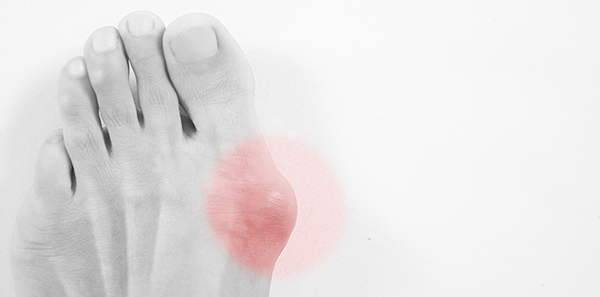
HALLUX VALGUS, commonly known as BUNIONS, are a deviation of the big toe towards the rest of the toes that causes acute inflammation on the side. The pain is constant, increasing with walking and decreasing with rest.
It is a complex multifactorial deformity, although in almost all cases there is a common denominator such as abnormal gait. This causes the various bony segments of the foot to deform as a result of the load and mechanical function to which it is subjected. Other contributing factors include:
- Genetics and inheritance in foot shape and function.
- Footwear, in tight and pointed shoes.
- Hormones and gender, as the morphology of the female and male foot is different.
- Patho-mechanical factor, i.e., due to movement in the foot’s heel bones.
Some of the symptoms encountered, according to the evolution of the process, include:
- Bone deformity that alters the structure of your footwear and inflames the soft tissues.
- Pain due to pressure and friction caused by footwear and loss of alignment of the big toe in relation to the rest of the foot.
- It is usually accompanied by other disorders such as “hammertoes” (inability to fully elongate your toe).
Treatment depends on the degree of deformity, age and symptoms, and a preliminary study must be carried out to evaluate the technique to be followed. Podiatrists and orthopaedic surgeons are responsible for treatment.
- Preventive or conservative treatment. This involves correcting the abnormal gait and slowing down bone deformities with plantar supports (insoles), night toe separators (braces) and appropriate footwear. This has greater benefits and minimal risks.
- Surgical treatment when deformities and pain are significant and affect gait. Basal osteotomy is the most commonly used treatment and consists of cutting the metatarsal bone. The bone can then be realigned and the tendons lengthened or repositioned.












